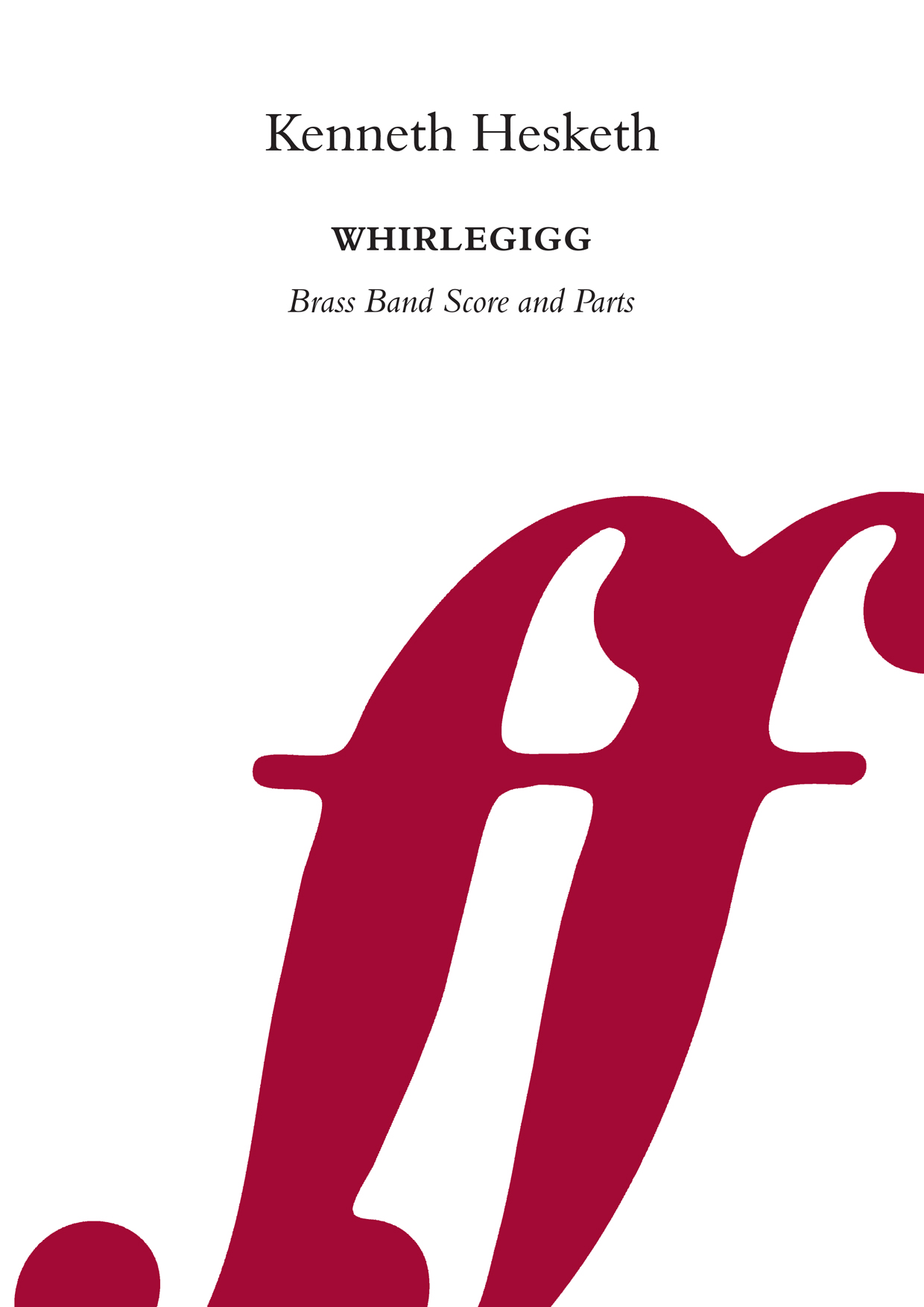Results
-
£50.00
Whirlegigg - Kenneth Hesketh
'Whirlegigg' is the middle English word for a contraption that continuously spins. A great fascination with many inventors of the medieval period was to develop a perpetual motion machine constantly turning and giving off energy. This idea is particularly apt for this piece. A simple ternary structure gives ample opportunity for both boisterous and reflective material with gyrating accompaniment figures never far away. The machine almost stops near the end, but finally musters one last burst of excitement and energy to bring the work to its close.Brass Band Grade 5: 1st SectionDuration: 5 minutes.Whirlegigg has been recorded by the Leyland Band, conducted by Jason Katsikaris, and is available on the CD Penlee.
In stock: Estimated dispatch 1-3 days
-
£20.00
Hybrid - Geert Jan Kroon
Hybrid is a solo work for euphonium and track. The musical material is taken from the name of client. Hybrid means as much as a close mixing of disparate things. In this case, a cross between live euphonium/performer and recorded sounds of a euphonium/performer. The emphasis lies on various forms of breathing and other sounds the euphonium can produce.
-
 £79.95
£79.95Grieg Variations - Jonathan Bates
DURATION: 12'30". DIFFICULTY: 2nd+. . 'Grieg Variations' is a through-composed work in the traditional style of a 'theme & variations'. The work opens with the main melodic fragment featured throughout Grieg Variations which comes from Grieg's Peer Gynt Suite No.2; the final movement - 'Solveig's Song'. . This theme is followed by a set of 9 variations, each taking inspiration from various melodies and styles found within the Peer Gynt Suite. The first variation, a light-footed scherzo based upon the tonal line of Solveig's Song is followed by an 'Alla marcia' variation - in which the music is inspired by the 2nd movement - 'Arab Dance' - of the original suite. The 3rd variation takes a far darker and more aggressive turn in a variation set around the music of the 1st movement of the Peer Gynt Suite before a relaxation into a solemne revisiting of the original theme. Opening with a sombre and longing solo for Flugel horn, the focal point of this 4th variation is an extended solo for the Solo Euphonium, marked 'molto espressivo'. The new material here is used as a theme throughout this variation, being reprised by the full band immediately after as the music builds to a climax point at the top of the musical line. . Following this, there are 2 cadenzas for the Solo Horn and Solo Cornet respectively; the former inspired by the thematic material of Solveig's Song, and the latter from the Oboe cadenza at the beginning of Grieg's '2 Lyric Pieces, Op.68'. These cadenzas lead swiftly into the 7th variation, a bustling rhyhm-driven movement set in complex time. The 3rd movement of the Peer Gynt Suite No.2 - 'Peer Gynt's Homecoming' - makes it's first appearance in variation 8 in a triumphant battle-like setting before a combination of both this material and the Solveig's Song combine to bring Grieg Variations to it's close -not without a little nod to potentially Grieg's most famous work - In The Hall of the Mountain King. . .
In stock: Estimated dispatch 1-3 days
-
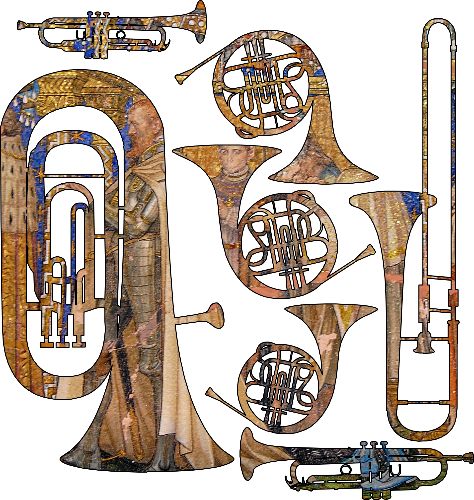
Procession of the Nobles | Rimsky-Korsakov arr. Alwyn Green (10)
An arrangement by Alwyn Green for 10 piece Brass ensemble, The Procession of the Nobles is the only familiar music from the Mlada Suite by Rimsky-Korsakov.The music bursts to life with a rousing flourish, soon followed by a noble processional tune. The music is full of colour and energy, with a beautiful melodic section, before the central vigorous section leads to a return to the march theme, and a rousing close.The Procession of the Nobles is played by Prince of Wales BrassInstrumentation1st Trumpet in Eb2nd Trumpet in Bb3rd Trumpet in BbFlugelhorn in BbHorn in F1st Trombone2nd TromboneBass TromboneEuphoniumTubaPercussion Parts (2):1. Timpani2. Glockenspiel/Side Drum/Cymbal TriangleISMN: 979-0-708127-13-0
-
 £10.00
£10.00Edward Gregson: Concertante for Piano and Brass Band
DescriptionProgramme NoteThe Concertante for Piano and Brass Band was written in 1966, when the composer was an undergraduate student at the Royal Academy of Music in London. It received its first public concert performance in 1967 at the Royal Festival Hall, London, when the composer was the soloist with the International Band of the Salvation Army, conducted by Bernard Adams. It was one of the first major works to be written for this particular combination.The Concertante is unashamedly romantic in idiom and is in three movements: Prelude, Nocturne and Rondo. The Prelude is cast in sonata form and opens with a short cadenza-like flourish from the soloist, followed by two main ideas - the first sweepingly dramatic, the second highly lyrical. The interplay between these two themes forms the main focus of the movement, and after a return to the opening theme, an exuberant codetta brings the music to a close, albeit a quiet one.https://www.morthanveld.com/wp-content/uploads/2017/09/Gregson-Concertante-1st-movt-clip.mp3The tender Nocturne opens with an introduction from the band that contains precursors of the two main ideas to follow. The solo piano announces the main theme, which has a slightly 'bluesy' character with its flattened third and seventh notes of the scale, and is a love song dedicated to the composer's wife-to-be. The band enters with phrases of a chorale already hinted at in the introduction - Ray Steadman-Allen's hymn tune 'Esher' - but never quite presented in its complete state. Both ideas are developed alongside each other, with eventually the first theme returning, this time with piano and band together, and building to a majestic climax, before subsiding to a peaceful coda - a return to the very opening of the movement.https://www.morthanveld.com/wp-content/uploads/2017/09/Gregson-Concertante-movt-2-clip.mp3The final Rondo is full of energetic rhythms and changing time patterns. The main theme is playful in character, with much interplay between soloist and band, whilst the middle section presents a new theme, and one that has more than a hint of the hymn tune 'Onward Christian Soldiers', in what amounts to a good humoured parody. The opening Rondo theme returns, this time leading to a powerful and dissonant climax from the band. This is followed by an extended piano cadenza, underlying the virtuoso aspect of the work, and leading to an energetic and life-affirming coda, which brings the work to a triumphant conclusion.https://www.morthanveld.com/wp-content/uploads/2017/09/Gregson-Concertante-movt-3-clip.mp3Duration: 18 minutesInstrumentation:Please note that there is no 1st/Repiano Cornet part in this work. The 1st/Repiano Cornet player should join the Solo Cornet bench. As such an extra Solo Cornet part is provided in the set of parts.Version for two pianosA version of the Concertante for two pianos is available for rehearsal purposes. Piano 1 is the solo part and Piano 2 the band reduction. However, for those pianists not needing to rehearse the work in this way, a solo piano part is also provided with the main set of band parts.To view a preview of the solo part for the first movement click here.The youthful Gregson (his work was written as a third year undergraduate) was seemingly a bit of a musical magpie - but one heck of a skilful one at that.These were shiny baubles of poise, panache and pastiche, with affectionate, remarkably mature nods of appreciation towards Gershwin, Rachmaninov, Ireland and even Elmer as well as Leonard Bernstein.The rich colour palette and flowing lines (with the tenderest of central Nocturnes) were a joy - as were the little buds of motifs that dotted the score like seeds ready to be planted on a future fertile brass band compositional field. - Iwan Fox, 4Barsrest.com, June 2019For more information on Edward Gregson's music please visit the composer's website: www.edwardgregson.com
Estimated dispatch 7-14 working days
-
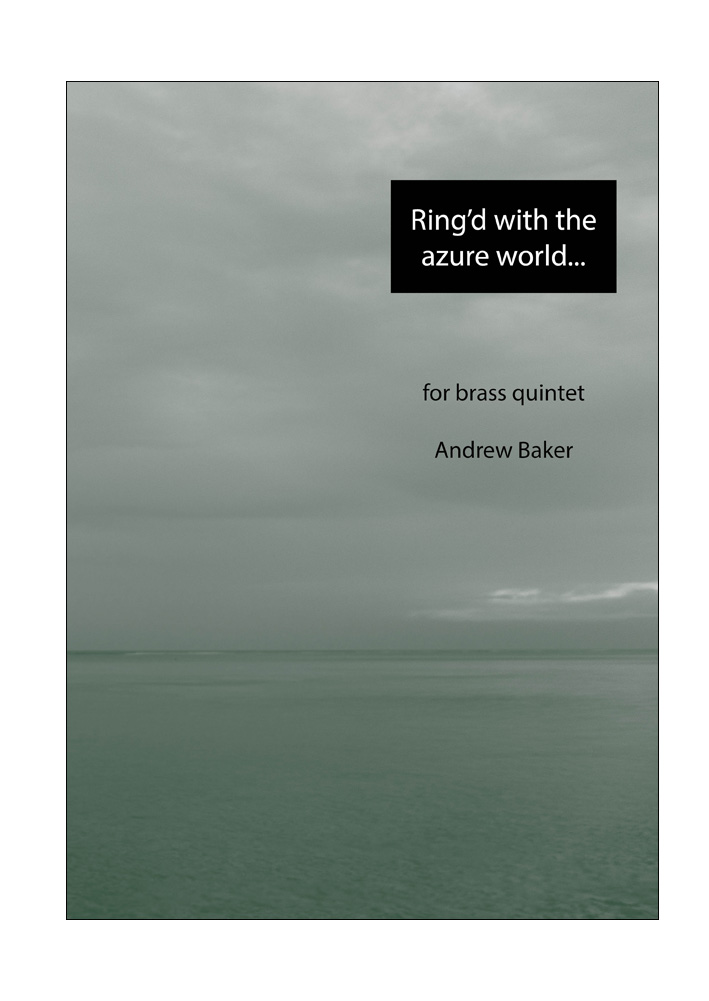 £25.00
£25.00Ring'd with the Azure World
DescriptionRing'd with the Azure World was commissioned by the Harmonia Brass quintet for their final recital at the University of Huddersfield in 2016.He clasps the crag with crooked hands;Close to the sun in lonely lands,Ring'd with the azure world, he stands.The wrinkled sea beneath him crawls;He watches from his mountain walls,And like a thunderbolt he falls.- The Eagle by Alfred, Lord TennysonThe music was inspired by Tennyson's poem reproduced above; it seeks simply to reflect the spirit of the poem. It opens in sparse, lonely mood as the eagle surveys the world beneath. The work quickens in three bursts using metrical modulation to disguise the actual moment of acceleration, reflecting the lazy energy stored in the circling raptor before concluding dramatically in a fall 'like a thunderbolt'. Tennyson's poem, although brief, has inspired much analysis and writing, and is notable for being written in the (then somewhat unfashionable) iambic tetrameter, indicating a foursquare emphasis reflected in the main theme of the music. This is heard first in an octatonic version and later in a purely tonal (if somewhat modal) version. The instrumentation reflects that of Harmonia Brass, a quintet composed of brass band instruments (two B flat cornets, an E flat tenor horn, tenor trombone and E flat tuba). However the music is also available for the more conventional brass quintet of two trumpets, french horn, trombone and tuba.To listen to an audio export preview and follow the music, click play on the video below!Performance Notes1st cornet/trumpet requires a cup mute, ideally with an adjustable cup (the marking "tight" denotes that the cup should be adjusted closer to the bell), and a harmon mute with the tube removed (denoted by "TR" in the score). 2nd cornet/trumpet requires a fibre straight mute and a harmon mute with the tube removed. Tenor horn require a fibre straight mute and a practice mute (any sort) - in the orchestral brass version the french horn requires a stop mute. Trombone requires a cup mute (only). Tuba requires a fibre straight mute and a practice mute (of any sort).Metronome marks should be closely observed - starting either too fast or too slow will have a disproportionate effect on the tempi later in the piece due to the metrically controlled tempo changes.
Estimated dispatch 7-14 working days
-
 £45.00
£45.00f/m
Descriptionf/m was inspired by the internet cartoon 'frequency' by the artist Randall Munroe, which can be seen atxkcd.'Frequency' displays a grid of randomly chosen statistical events which flash at the frequency of their real-time occurrence; an outwardly banal idea with surprisingly profound results. f/m (which - predictably - is short for frequency/modulation) takes a similarly random set of time/duration statistics and uses them to generate the note lengths for each instrument. The first four statistics (and the first brass instrument entries) are derived from physical science. The next eight are all related to the natural world. The final ten, for which the cornets are used, represent contemporary human activity. The percussion instruments maintain a "tick and chime" throughout the work. To view a PDF preview of the score click here.The statistics used are as follows, indicated by numbers in brackets in the score at the first iteration of each one:Lightning strikes the earth 100 times per secondThe first pulsar ever discovered, PSR1919+21, pulses once every 1.337 secondsThere are approximately 10 supernovae every 0.95 secondsEvery 0.6 seconds the entire solar system moves 100 miles around the galactic centreEvery 4.1 seconds a 70 kg human emits 1000 gamma rays due to naturally occurring potassiumA blue whale's heart beats once every 6.67 secondsA hedgehog's heart beats 300/min or 5 times a secondEvery 2 seconds the net population of the world increases by 5There is one birth every 0.24 secondsThere is one death 0.56 seconds5.14 people die of malaria every minute ( one every 11.67 seconds)10 kilotonnes of polar ice are lost on average every 1.4 seconds.Walmart's takes in sales revenue of $10,000 every 1.4 secondsEvery 3 seconds there are 60,000 plastic bags used in US supermarketsEvery 0.72 seconds the world uses 500 tonnes of paperEvery 7.65 seconds, South Korea builds a carEvery 1.75 seconds, China builds a carEvery 5.8 seconds, Germany builds a carEvery 4.7 seconds, the USA builds a truckTwo commercial airline flights take off every 1.86 secondsMacdonalds serves 300 burgers every 4 seconds and feeds 787 people per secondStarbucks uses 3 gallons of milk every secondPerformance Notes:All entries are cued by the conductor at his/her discretion. There is no specified minimum or maximum time between entries and no specified overall duration; the times between each new entry do not have to be consistent unless the conductor wishes them to be so. However each player should be allowed time to complete at least one iteration of their note, and preferably to become comfortable with their place in the overall texture - one of the aims of the work is try present dissonant sounds through the medium of the brass band outside the normal performance context, allowing players to find their place in a non-diatonic harmonic matrix without regard for linear motion or developmental activity. Entries should not coincide unless they align vertically on the score. While it is accepted that absolute accuracy is not possible, players should attempt to get as close as they can the the printed duration of their note, and do their best to keep that duration consistent during repetitions. Rests are indicated by empty staves. A continuous line indicates a repetition in progress.Soprano cornet will require a harmon mute. Cornet 1 and Trombone 2 require metal straight mutes. Cornets 5,7,8 and 9 require cup mutes. The work requires three percussionists, playing tubular bells, vibraphone and and egg shaker.Approximate duration 6'00" - 9'00"
Estimated dispatch 7-14 working days
-
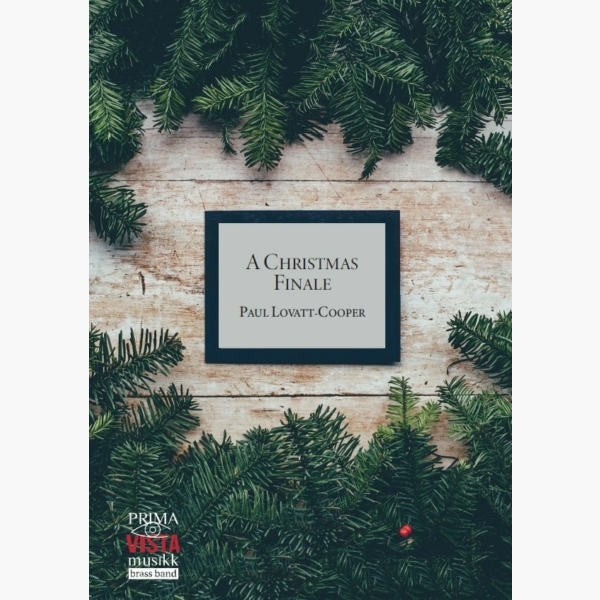 £34.95
£34.95A Christmas Finale - Paul Lovatt-Cooper - Christian Jenkins
As the title suggests, A Christmas Finale provides an ideal close to any Christmas concert. Paul Lovatt-Cooper has taken a collection of popular works associated with Christmas and expertly crafted this wonderful piece to provide both the listener and performer...
Estimated dispatch 4-7 working days
-
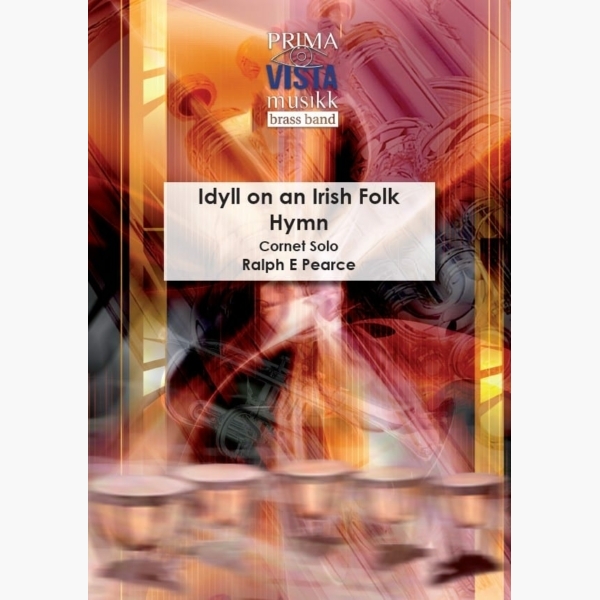 £24.95
£24.95Idyll on an Irish Folk Hymn - Ralph E Pearce - Barrie Forgie
Idyll on an Irish Folk Hymn was originally written for a concert of Irish music given by the Phoenix-based Salt River Brass. It was made at the request of a close friend of the composer, whose favourite melody this is....
Estimated dispatch 4-7 working days
-
£44.95
MY COMFORT AND STRENGTH (Meditation) (Brass Band Set) - Brian Bowen
A Salvation Army classic based on the hymn 'The God of love my Shepherd is', a paraphrase of Psalm 23 to the tune 'University'. The setting, using fragments of the tune, reflects the differing moods of the Psalm culminating in an inspiring close.
Estimated dispatch 7-14 working days

